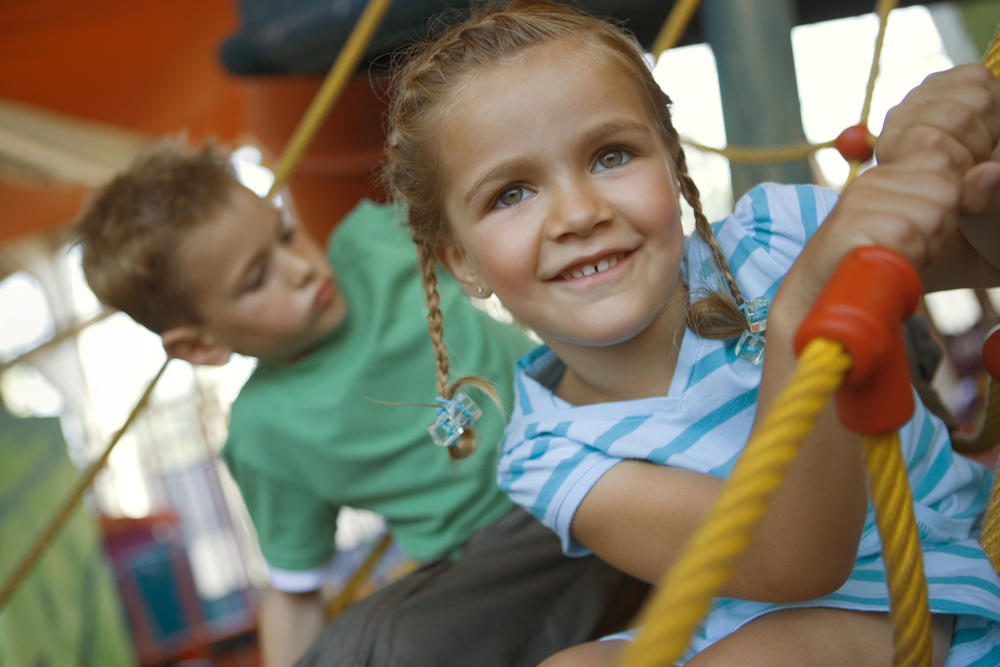
It’s 4 p.m. and you finally close the laptop as your child’s virtual school day ends. Or, maybe your child physically went to school today but had limited time at the playground. And it shows. They need action!
Physical activity helps a child stay regulated (process and adjust to their environment) and promotes the maturation of their nervous system. Due to the Coronavirus pandemic, it is even more important to make children’s physical wellbeing a priority to combat the potential negative effects on their physical, social, and psychological health. Physical activity in children is even associated with higher academic performance!
These top 10 afterschool activities are perfect for getting the wiggles out of your kids, no matter what materials or space you have!
1. Obstacle Course
Give your child a minimum of 3 to 4 steps. Get creative with what you have at home (both indoors and outdoors) when coming up with tasks at each “station”. A few ideas to start with: throw balls into a laundry basket, do 10 jumping jacks, jump in and out of a hoola-hoop, crawl under chairs. Try getting your child to complete as much of the course as independently as they can. Challenge them to remember each step in the sequence (and in the right order) to help develop their memory and other cognitive skills!
2. Simon Says
A classic! “Simon says do a handstand.” “Stand on 1 leg.” A simple game of Simon Says can help promote body awareness as your child engages in different movements. They’ll also have to use their auditory comprehension skills to follow the directions and listen for whether or not “Simon” said!
3. Ball Bounce
Bouncing on a large exercise ball against a wall can give your child just the amount of physical input their body needs. To add some cognitive demands, ask your child to sing their ABC’s while bounding, or go back and forth naming different animals for each letter of the alphabet without repeating.
4. Animal Walk Relay
Make a “path” around the house using tape, flags, or colorful dots. Have your child get from point A to point B by pretending to be the animal you name. Bear walk, bunny hop, crab walk, frog jumps – this one’s sure to work their muscle strength and coordination!
5. Go for a Ride
Kids can take a ride on their bike, scooter, skateboard, or whatever they choose! For an added language benefit, play “I Spy” while riding to help improve your child’s vocabulary by understanding and using descriptive words.
6. Towel Tug
Lay a towel on the floor and weigh it down with objects. Or, have a sibling sit on it! Have your child pull the towel across the room. Keep them motivated by asking them to make a prediction of how many times they think they can do this!
7. Scorpion Game
Parents—here’s a new sensory-motor game that also gives you time to interact with your kids! You pretend to be a scorpion, holding a pool noodle as your stinger and keeping your eyes closed. Your child is the squirrel that has to try and “rescue” stuffed animals from the ground by picking one up and running it back to the other side of the room. If your child gets “stung” and you tap them with the noodle, they must do an exercise you choose (jumping jacks, star jumps, or sit-ups, for example).
8. Dog Catcher
Make two bases across from each other, connected by a path of pillows. You are the dog catcher and your child is the puppy. He or she must rescue their stolen “bones” (balls) or animal friends (stuffed animals) by taking the pillow path to your base and back when you pretend to go to sleep. If your child wakes you up or accidentally steps on the floor, the dog catcher (you) have to try and tag the puppy!
9. Lava Floor
Pretend the floor is lava! You and your child can make a path in the living room to get from the couch to the door without touching the floor. Use pillows, bean bags, and other objects you find to help your child practice their balance, coordination, and creativity!
10. Jump Up!
A great way to give your child’s body some vestibular input (balance and awareness of their body’s position in space)? Jumping! Kids can jump on a trampoline or on a mattress you put on the floor.
Some children may have trouble with balance, coordination, strength, are constantly moving, or become easily distracted. If you have concerns in these areas of your child’s development, an evaluation by a physical therapist or occupational therapist can help. TherapyWorks is a company that provides these services (in addition to speech therapy, feeding therapy, and social work) via teletherapy. You will be connected with a therapist who specializes in your areas of concern and can provide more tips for at-home activities for your child!
Resources:
U.S. Centers for Disease Control. Considerations for schools.https://www.cdc.gov/coronavirus/2019-ncov/community/schools-childcare/schools.html
Sprang, Ginny & Silman, Miriam. (2013). Posttraumatic Stress Disorder in Parents and Youth After Health-Related Disasters. Disaster Medicine and Public Health Preparedness. 7. 10.1017/dmp.2013.22.











